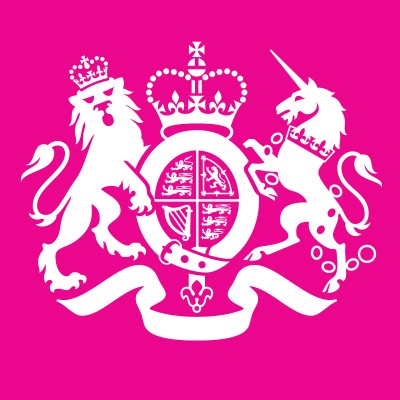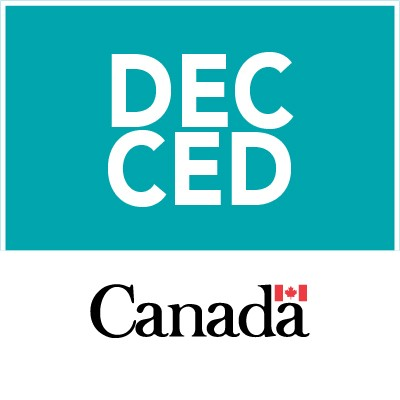G7 Summit: A Rocky Road in the Canadian Rockies
June 18, 2025, 12:42 pm

Location: United Kingdom, Wales, Newport, Wales
Employees: 1001-5000
Founded date: 1954
Total raised: $12.06B

Location: United States, District of Columbia, Washington
Employees: 10001+
Founded date: 2000
The G7 summit in Kananaskis, Canada, unfolded against a backdrop of tension and uncertainty. Leaders from the world’s largest economies gathered in the stunning Canadian Rockies, but the atmosphere was anything but serene. With U.S. President Donald Trump at the helm, the summit was a tightrope walk between cooperation and conflict.
The gathering aimed to address pressing global issues: trade wars, the war in Ukraine, and escalating tensions in the Middle East. Yet, the specter of Trump loomed large. His unpredictable nature and controversial policies cast a long shadow over the proceedings.
From the outset, the summit was marked by divisions. Trump’s trade tariffs had already strained relationships with allies. The U.S. imposed hefty tariffs on steel and aluminum, leaving Canada and other nations scrambling to respond. Canada retaliated with its own tariffs, creating a tit-for-tat scenario that threatened to spiral into a full-blown trade war.
The summit’s host, Canadian Prime Minister Mark Carney, sought to navigate these treacherous waters. His priorities included strengthening peace and security, building critical mineral supply chains, and creating jobs. However, the looming specter of U.S. tariffs and the ongoing conflicts in Ukraine and the Middle East threatened to overshadow these goals.
Tensions escalated further as news broke of renewed hostilities between Israel and Iran. The conflict erupted just hours before the summit, with both nations launching attacks that resulted in significant casualties. German Chancellor Friedrich Merz emphasized the urgency of addressing Iran’s nuclear ambitions, calling for diplomacy while ensuring Israel’s right to defend itself.
Yet, the summit quickly became a stage for Trump’s unpredictable behavior. His early departure, citing the Middle East situation, left many leaders scrambling to salvage the discussions. Trump’s absence was felt deeply, particularly during a planned meeting with Ukrainian President Volodymyr Zelenskyy. The U.S. had previously signed an agreement granting access to Ukraine’s mineral resources, but Trump’s reluctance to engage left Zelenskyy in a precarious position.
In Trump’s wake, the remaining leaders attempted to forge a united front. They discussed combating non-market policies that jeopardized access to critical minerals and pledged to address the potential downsides of artificial intelligence. However, the absence of a joint statement on Ukraine highlighted the fractures within the group. A senior Canadian official revealed that the U.S. opposed a consensus statement, leaving many leaders frustrated.
The summit’s dynamics shifted dramatically without Trump. The remaining leaders engaged in extensive discussions about Ukraine, reaffirming their support for Zelenskyy. British Prime Minister Keir Starmer announced new sanctions on Russia, while discussions about a ceasefire plan emerged. However, Trump’s stance on Ukraine remained a point of contention. He suggested that the conflict might not have escalated had Russia not been expelled from the G8 in 2014, raising eyebrows among his counterparts.
As the summit progressed, the specter of the Middle East conflict loomed large. Trump’s aggressive rhetoric towards Iran raised concerns among European leaders. French President Emmanuel Macron cautioned against pursuing regime change through military means, warning that it could lead to chaos. Yet, Trump’s departure only heightened the drama, leaving leaders to grapple with multiple crises without the U.S. president’s input.
The summit also served as a reminder of the challenges facing the G7. The group, formed to address shared economic and geopolitical challenges, found itself grappling with internal divisions. Trump’s trade policies and reluctance to engage on key issues left many wondering if the U.S. was still committed to multilateralism.
As the summit drew to a close, the question remained: Is Trump with us or against us? The G7 leaders were left to ponder their next steps in a world increasingly defined by geopolitical rivalries. The summit may have concluded, but the challenges ahead loomed larger than ever.
In the end, the G7 summit in Kananaskis was a microcosm of the current global landscape. The breathtaking beauty of the Canadian Rockies contrasted sharply with the tumultuous political climate. As leaders departed, they carried with them the weight of unresolved issues and the uncertainty of a world on the brink of multiple crises. The summit may have ended, but the journey toward cooperation and understanding was far from over.
The gathering aimed to address pressing global issues: trade wars, the war in Ukraine, and escalating tensions in the Middle East. Yet, the specter of Trump loomed large. His unpredictable nature and controversial policies cast a long shadow over the proceedings.
From the outset, the summit was marked by divisions. Trump’s trade tariffs had already strained relationships with allies. The U.S. imposed hefty tariffs on steel and aluminum, leaving Canada and other nations scrambling to respond. Canada retaliated with its own tariffs, creating a tit-for-tat scenario that threatened to spiral into a full-blown trade war.
The summit’s host, Canadian Prime Minister Mark Carney, sought to navigate these treacherous waters. His priorities included strengthening peace and security, building critical mineral supply chains, and creating jobs. However, the looming specter of U.S. tariffs and the ongoing conflicts in Ukraine and the Middle East threatened to overshadow these goals.
Tensions escalated further as news broke of renewed hostilities between Israel and Iran. The conflict erupted just hours before the summit, with both nations launching attacks that resulted in significant casualties. German Chancellor Friedrich Merz emphasized the urgency of addressing Iran’s nuclear ambitions, calling for diplomacy while ensuring Israel’s right to defend itself.
Yet, the summit quickly became a stage for Trump’s unpredictable behavior. His early departure, citing the Middle East situation, left many leaders scrambling to salvage the discussions. Trump’s absence was felt deeply, particularly during a planned meeting with Ukrainian President Volodymyr Zelenskyy. The U.S. had previously signed an agreement granting access to Ukraine’s mineral resources, but Trump’s reluctance to engage left Zelenskyy in a precarious position.
In Trump’s wake, the remaining leaders attempted to forge a united front. They discussed combating non-market policies that jeopardized access to critical minerals and pledged to address the potential downsides of artificial intelligence. However, the absence of a joint statement on Ukraine highlighted the fractures within the group. A senior Canadian official revealed that the U.S. opposed a consensus statement, leaving many leaders frustrated.
The summit’s dynamics shifted dramatically without Trump. The remaining leaders engaged in extensive discussions about Ukraine, reaffirming their support for Zelenskyy. British Prime Minister Keir Starmer announced new sanctions on Russia, while discussions about a ceasefire plan emerged. However, Trump’s stance on Ukraine remained a point of contention. He suggested that the conflict might not have escalated had Russia not been expelled from the G8 in 2014, raising eyebrows among his counterparts.
As the summit progressed, the specter of the Middle East conflict loomed large. Trump’s aggressive rhetoric towards Iran raised concerns among European leaders. French President Emmanuel Macron cautioned against pursuing regime change through military means, warning that it could lead to chaos. Yet, Trump’s departure only heightened the drama, leaving leaders to grapple with multiple crises without the U.S. president’s input.
The summit also served as a reminder of the challenges facing the G7. The group, formed to address shared economic and geopolitical challenges, found itself grappling with internal divisions. Trump’s trade policies and reluctance to engage on key issues left many wondering if the U.S. was still committed to multilateralism.
As the summit drew to a close, the question remained: Is Trump with us or against us? The G7 leaders were left to ponder their next steps in a world increasingly defined by geopolitical rivalries. The summit may have concluded, but the challenges ahead loomed larger than ever.
In the end, the G7 summit in Kananaskis was a microcosm of the current global landscape. The breathtaking beauty of the Canadian Rockies contrasted sharply with the tumultuous political climate. As leaders departed, they carried with them the weight of unresolved issues and the uncertainty of a world on the brink of multiple crises. The summit may have ended, but the journey toward cooperation and understanding was far from over.

